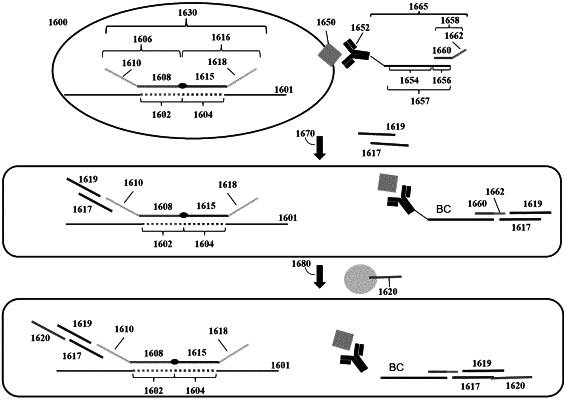| CPC C12Q 1/6874 (2013.01) [C12Q 1/6818 (2013.01); C12Q 2600/16 (2013.01)] | 30 Claims |

|
1. A method of analyzing a cell, comprising:
(a) providing a sample comprising a cell, wherein the cell comprises:
(i) a feature, wherein the feature comprises a protein, a peptide, a lipid, or a carbohydrate; and
(ii) a nucleic acid molecule; and
(b) contacting the cell with a feature binding group and coupling the feature binding group to the feature, wherein the feature binding group comprises an oligonucleotide comprising a feature nucleic acid sequence that identifies the feature binding group;
(c) hybridizing a first nucleic acid probe to the nucleic acid molecule; wherein the first nucleic acid probe comprises (i) a hybridizing sequence that hybridizes to a first target sequence of the nucleic acid molecule and (ii) a non-hybridizing sequence;
(d) using the feature nucleic acid sequence and a first barcode molecule comprising a first barcode sequence to generate a first barcoded nucleic acid molecule comprising (i) the feature nucleic acid sequence or reverse complement thereof, and (ii) the first barcode sequence or reverse complement thereof; and
(e) using the non-hybridizing sequence and a second barcode molecule comprising a second barcode sequence to generate a second barcoded nucleic acid molecule comprising (i) the first target sequence or reverse complement thereof and (ii) the second barcode sequence or reverse complement thereof.
|